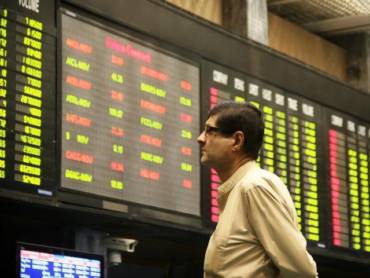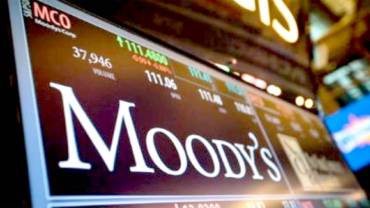On Monday, Moody’s Investors Service updated Pakistan’s credit rating outlook to stable. Further, the report said it showed Pakistan’s relatively large economy and strong growth potential.
[adinserter block =”3″]
The report propelled Pakistan’s stock market above 40,000 points after 10 months. The Pakistan Stock Exchange’s (PSX) benchmark KSE 100 Index rose 2.08%, or 836.57 points, to 40,124.22 points.

Source: Injacom
“The change in outlook to stable is driven by Moody’s expectations that the balance of payments dynamics would continue to improve, supported by policy adjustments and currency flexibility,” said Moody.
While indicating a change the report read, “Such developments reduce external vulnerability risks, although foreign exchange reserve buffers remain low and will take time to rebuild.”
Further, it continued that while financial strength remained low owing to currency devaluation, continuing economic reforms were supposed to alleviate hazards linked to debt sustainability and government liquidity.
“Pakistan’s Ba3 local currency bond and deposit ceilings remain unchanged,” said the report.
“The B2 foreign currency bond ceiling and the Caa1 foreign currency deposit ceiling are also unchanged. The short-term foreign-currency bond and deposit ceilings remain unchanged at Not Prime.”
“These ceilings act as a cap on the ratings that can be assigned to the obligations of other entities domiciled in the country.”
Earlier, Pakistan went through the vicious cycle of financial crises, which took Pakistan on the verge of collapse.
PTI’s Reaction
Pakistan Tehreek-e-Insaf government has taken the report affirmatively. Moreover, the Pakistan Tehreek-e-Insaf government is assumed to drift Eurobonds and Sukuks over the next few months. Primarily, the bonds will support Pakistan’s foreign currency reserves.
[adinserter block =”10″]
Besides, Adviser to Prime Minister on Finance and Revenue Dr. Abdul Hafeez Shaikh tweeted about the report. He said, “Moody’s upgrades Pakistan’s outlook to B3 ‘stable’ from ‘negative’. The up-gradation of outlook to stable is the affirmation of the government’s success in stabilising the country’s economy and laying a firm foundation for robust long-term growth.”
Furthermore, Moody’s also affirmed the state of Pakistan’s local and foreign currency long-term issuer and senior unsecured debt ranks at B3.
“Such developments reduce external vulnerability risks, although foreign exchange reserve buffers remain low and will take time to rebuild.”
Moreover, Federal Minister for Planning, Development and Reforms Asad Umar also Tweeted about the report.
He said, “Moody’s acknowledges the success of stabilisation measures and upgrades Pakistan’s outlook from negative to stable. Should help improve access to financing and reduce its cost.”

Source: Emerging Europe
In PML-N’s Era, Moody Report never reached this point
Asad Umar in a Tweet said, (originally posted in Urdu) In 2018 Moody put Pakistan from affirmative to the list of negative. In our government’s rule of 15 months, Moodys added Pakistan back into affirmative from negative. The decision is yours who destroyed the economy.
نون لیگ کے5سالہ اقتدارکےبعد، تحریک انصاف کی حکومت سے2ماہ قبل 20 جون 2018 کو موڈیز نے پاکستانی معیشت سے "مستحکم" ہٹاکر "منفی" کا لیبل چسپاں کردیا۔ ہماری حکومت کے 15ماہ بعد موڈیز نےاسے "منفی" سےنکال کر "مستحکم" کےدرجےمیں شامل کرلیا۔فیصلہ آپکا! کس نےمعیشت تباہ کی اورکون تعمیرکررہاہے
— Asad Umar (@Asad_Umar) December 2, 2019
However, the Moody report put Pakistan from affirmative to negative in 2018. The statistics of the whole PML-N government portray the picture otherwise. The growth rate the time of PML-N government was at 6percent. Whereas, today the growth rate is much lower than 6percent.
[adinserter block =”4″]
To conclude, the animosity and verbal clashes would sustain between the two rival parties__PML- and PTI. Plus, the point to ponder is that Pakistan is moving towards a positive road. Besides, the current account deficit also narrowed down.







